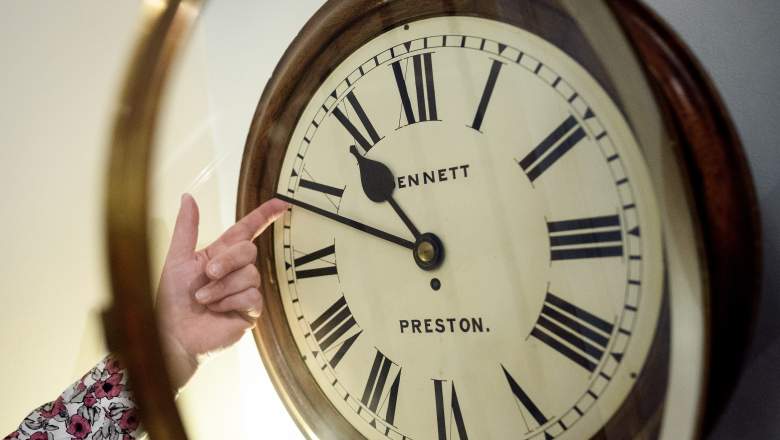
Getty Duncan Clements of Pendulum of Mayfair antique clock specialists carries out the summertime adjustment of the clocks, regulators and timepieces in the display rooms on April 01, 2019 in London, England.
Daylight Saving Time (sometimes erroneously called “Daylight Savings Time”) officially begins on the second Sunday of March, which means that in 2021 we change our clocks back on Sunday, March 14, in all places that observe Daylight Saving Time. Typically, 2 a.m. local time is the traditional time that you should move your clocks forward an hour.
The phrase that people commonly use to remember how Daylight Saving Time works is “spring forward, fall back” — i.e., move your clocks ahead in the spring and back in the fall. So on Sunday, March 14, the tradition is to move your clock from 2 a.m. to 3 a.m. in the middle of the night — or if you don’t want to get up (or stay up), it’s alright to move your clock forward when you go to bed on Saturday night.
Cell Phones Will Take Care of Themselves
If you use your cell phone as your bedside clock and alarm system, don’t worry about oversleeping on Sunday morning. Cell phones should automatically adjust when the time changes and your alarm should go off at the correct time.
According to Android Central, “Unless you went into your phone’s settings and switched away from the automatic network time (in which case you already know what to do), you won’t have to do a thing. Your Android will check the network for the correct date and time and switch itself on its own overnight, changing the system time so that things like calendars and alarms will still be right.”
If you’re still worried, you can double-check your date and time settings. As long as your time zone is correct and you have “automatic time zone” or “automatic date and time” turned on, your phone will make the switch automatically.
States Without Daylight Saving Time
Within the United States and its territories, a few areas don’t observe Daylight Saving Time, so if you live there, you have nothing to worry about. These states and territories include Arizona, Hawaii, Puerto Rico, the U.S. Virgin Islands, American Samoa, Guam, and the Northern Mariana Islands.
According to TIME, several other states are considering halting their observation of Daylight Saving Time, including Alaska, Texas, Florida, and a commission in Massachusetts that is campaigning to have that state switch to Atlantic time, which would ostensibly end Daylight Saving Time there.
Across the globe, there are over 70 countries that observe Daylight Saving Time and over 170 countries that choose not to. According to Time and Date, there are 76 countries where at least one location within the country observes Daylight Saving Time. Most of those locations are in North America and Europe; most of Africa, Asia, and South America do not observe Daylight Saving Time. Australia is split between areas that do observe it and areas that do not.
Daylight Saving Time In Years Ahead
In future years, here are the dates for when Daylight Saving Time starts and ends:
- 2022: Sunday, March 13 and Sunday, November 6
- 2023: Sunday, March 12 and Sunday, November 5
- 2024: Sunday, March 10 and Sunday, November 3
- 2025: Sunday, March 9 and Sunday, November 2
READ NEXT: Why Do We Observe Daylight Saving Time?